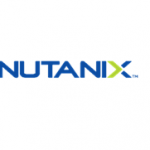By Benjamin Wong, Director, APJ, Progress Software
With the technology advancements customers are now interacting with enterprises across more channels and touchpoints than ever before. While additional data from these sources can be a great way for businesses to craft a targeted and personalised approach to engage customers, the process of analysing available data to gain valuable insights can be complex and daunting. The adoption of big data and analytics technologies significantly varies across different regions and industries. How far have businesses in the Asia-Pacific region progressed with this trend? The results of the Economist Intelligence Unit report[1] show that enterprises in Asia-Pacific have had limited success so far in implementing big data practices. While a third say they are well advanced, more than half say they have made only limited progress. Surprisingly 91% of respondents cite factors within their own firms as barriers to adoption, including a group of issues involving difficulty in sharing information across organisational boundaries.
The decision to augment existing IT environments with a modern system platform is often made by gut feeling, without much in-depth planning. While big data system platforms offer amazing scalability and elasticity at a low cost, a poorly executed implementation strategy potentially mitigates all of the added value of a new system. When considering whether to adopt big data, decision makers within the organisation must specify clear performance objectives and metrics to ensure that the desired systemic and environmental benefits would be derived from the transition.
At the same time, decision makers need to assess the potential risks and barriers to a successful deployment and understand how to mitigate those risks. This means that any transition to big data should not be done in a vacuum. It is important to formulate the organisation’s strategic direction for its future technology vision as well as legacy renovation, then align the technology choices with that direction, and develop an evolutionary program for migrating to big data at the point in time when it makes sense. Business leaders should analyse and understand the real motivating factors for transitioning to big data, and clearly articulate the usability and objectives, such as:
- Performance, such as query performance, system scalability, data load speeds, data volume capacity, and the ability to manage mixed workloads
- Capabilities, including support for advanced analytics, simplicity in data accessibility, reporting, support for SQL, support for structured and unstructured data models, and high availability
- Platform independence, allowing for deployment on-premises, in the cloud, or a hybrid model
- Costs, such as costs by data volume, costs to scale, operating costs, and the costs associated with configuration, management, and ongoing maintenance
- Strategy, including objectives for legacy phase-out, training, and managing the learning curve for team members over the transition period
It is essential to recognise that data integration and accessibility is a critical component to a big data vision. Enterprises should assess the data integration challenges and consider the use of tools that provide a unified method for Business Intelligence/Analytics applications to gain access to a broad spectrum of data sources, regardless of where those data sources might reside, whether that is in the cloud, within the enterprise, or even behind a firewall. At the same time, it’s important to make sure that bi-directional data accessibility is supported and heritage applications can access NoSQL and Hadoop storage environments in ways that are scalable from a performance perspective yet provide high availability.
In summary: Making informed decisions about the adoption of big data within the context of an overall enterprise application renovation strategy is the key to successful incorporation and deployment
[1] The Economist Intelligence Unit Report, “The hype and the hope”, 2013, https://www.hds.com/assets/pdf/the-hype-and-the-hope-summary.pdf








